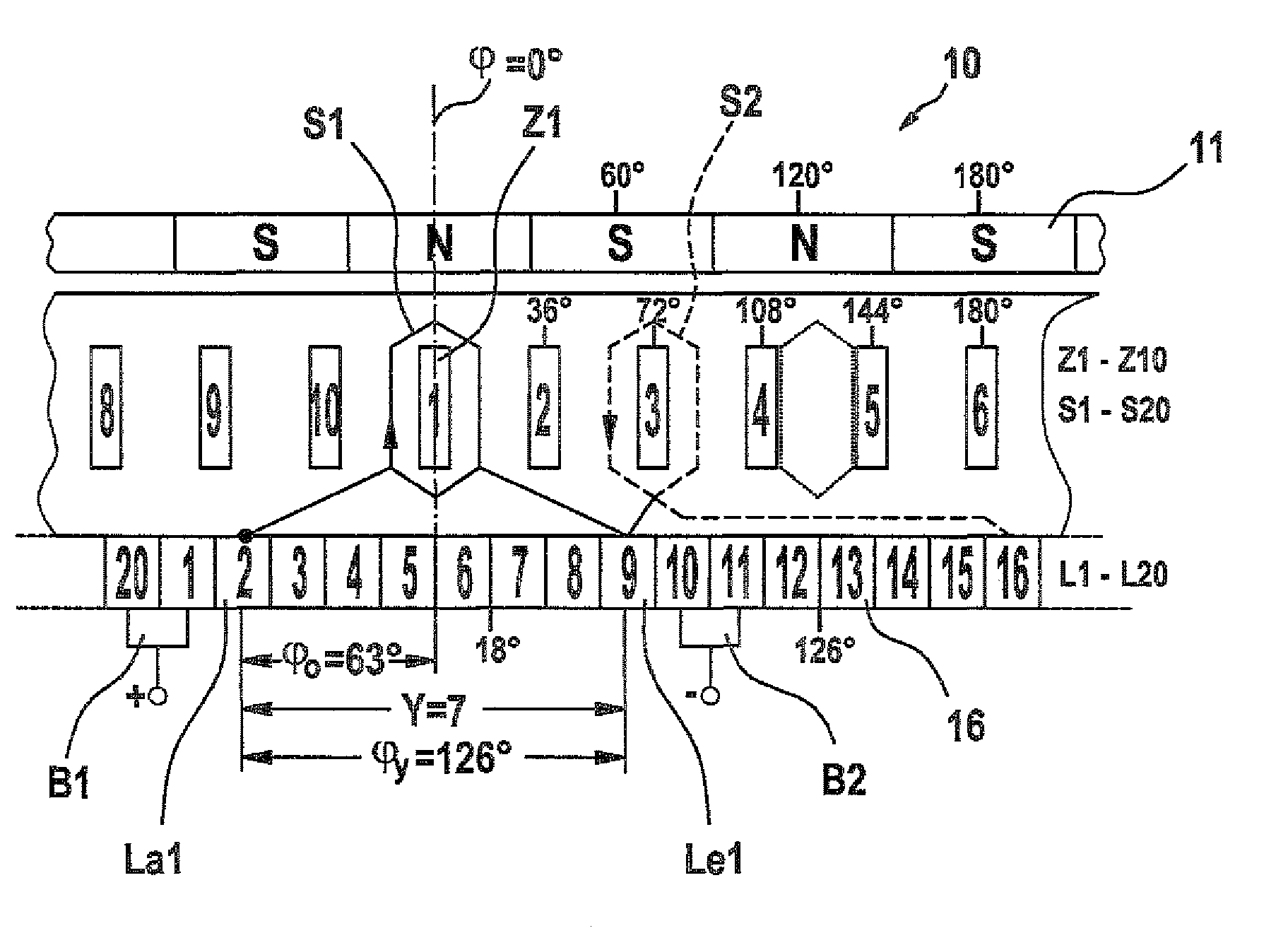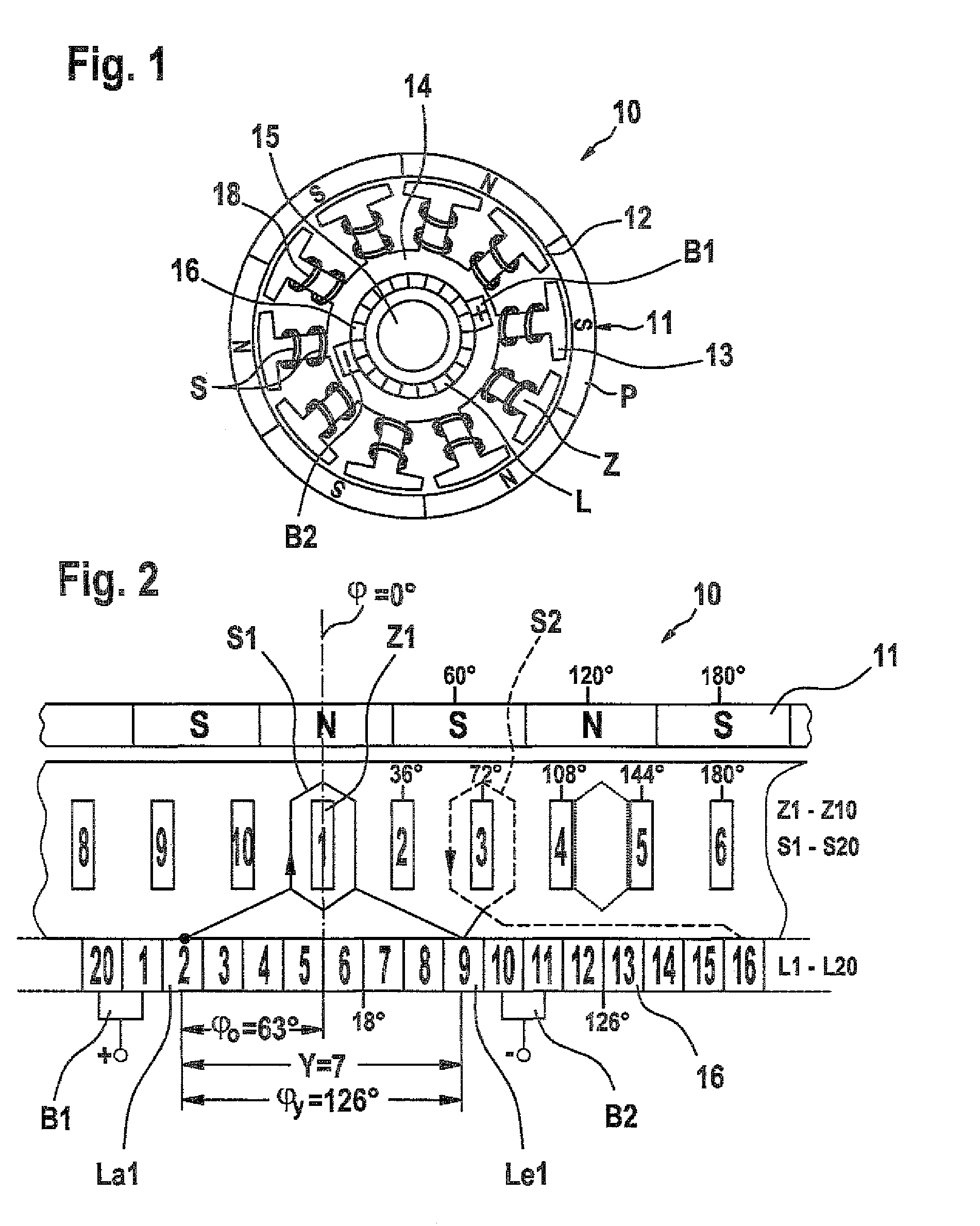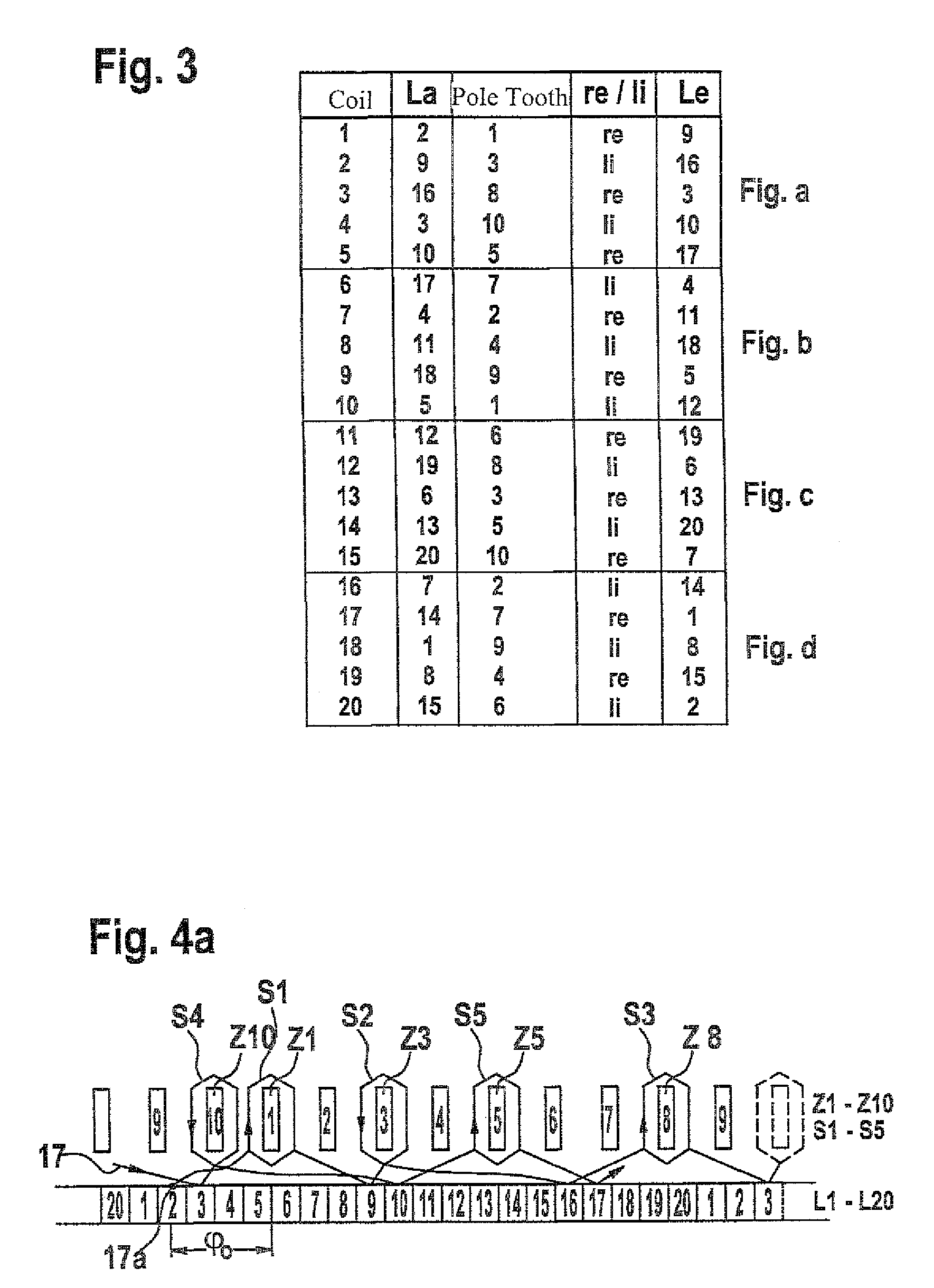Method for the production of a rotor winding for an electric machine
a technology of electric machines and winding heads, which is applied in the direction of stator/rotor bodies, synchronous machines with rotating armatures, stationary magnets, etc., can solve the problems of reducing the service life or durability of the motor, and increasing the wear and tear of the carbon brushes. , to achieve the effect of reducing the radial acting force excitation at the rotor, reducing the radial acting force, and increasing the length of the connecting
- Summary
- Abstract
- Description
- Claims
- Application Information
AI Technical Summary
Benefits of technology
Problems solved by technology
Method used
Image
Examples
Embodiment Construction
[0027]In FIG. 1, for a first exemplary embodiment, a permanent-magnetically excited six-pole direct current motor, as an electric machine, is schematically shown in front view and marked 10. Such machines are preferentially used for control drives, blowers, and the like in motor vehicles and must function reliably under heavy loads, if at all possible over the entire service life of the vehicle. Accordingly, their construction must be as robust as possible. The electric machine has a six-pole stator 11, which cooperates across a working air gap 12 with a commutator rotor 13, hereinafter called the rotor. The rotor 13 comprises a lamination packet 14, which is secured to a rotor shaft 15 that is supported on both ends. Ten pole teeth Z distributed uniformly are disposed on the circumference of the lamination packet 14, and between each of them, slots are embodied for receiving a total of twenty coils S of a rotor winding 18. The coils S are produced as single-tooth coils in pairs, ea...
PUM
| Property | Measurement | Unit |
|---|---|---|
| angle error | aaaaa | aaaaa |
| angle error | aaaaa | aaaaa |
| width | aaaaa | aaaaa |
Abstract
Description
Claims
Application Information
 Login to view more
Login to view more - R&D Engineer
- R&D Manager
- IP Professional
- Industry Leading Data Capabilities
- Powerful AI technology
- Patent DNA Extraction
Browse by: Latest US Patents, China's latest patents, Technical Efficacy Thesaurus, Application Domain, Technology Topic.
© 2024 PatSnap. All rights reserved.Legal|Privacy policy|Modern Slavery Act Transparency Statement|Sitemap



